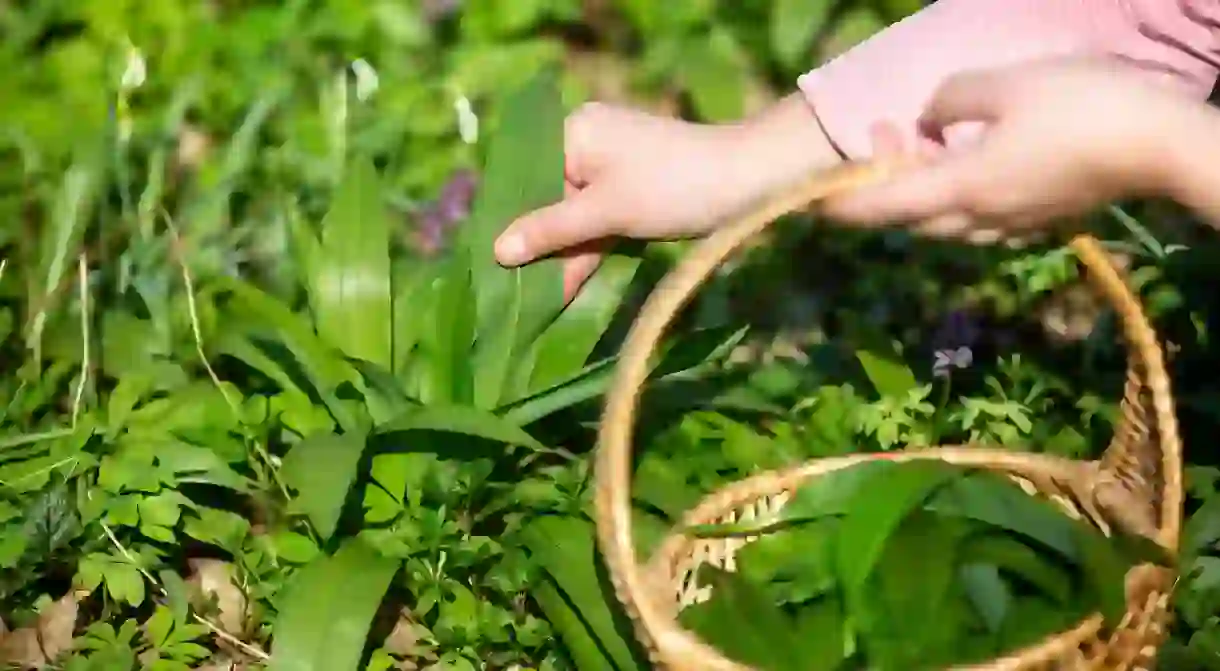Delicious Recipes to Make Using Foraged Foods

If there’s anything we’re doing more of these days, it’s cooking and exploring the local area. Sometimes the two go hand-in-hand; whether that be supporting local businesses and using local produce in your recipes, or foraging wild herbs from your local forest, there are plenty of dishes that you can recreate from your kitchen with this in mind.
Here, Culture Trip suggests some recipes to make using foods foraged from your garden, local forests or green spaces. But, if you’re wary of finding your own ingredients, swap them for something purchased from your local shop. From hand-picked elderberry jam to nettle spanakopita, these recipes will keep you busy in the kitchen. If you do forage, remember to do your research or check with a professional before going ahead.
Blackberry crumble with a sloe gin twist
Crumble shot to fame during World War II, when a shortage of ingredients meant a crumble topping was an economical and adequate alternative to a flaky pastry topping. These days, crumbles come in all shapes and flavours – from a traditional apple crumble to the savoury mincemeat crumble. But you simply can’t beat a blackberry crumble, especially if it has a boozy twist. Keep an eye out for blackberries splattered across bushes in your local area, if you come across a bush that packs a bunch of them, give this blackberry crumble with a sloe gin syrup a try, bonus points if you can find sloe berries for the syrup. A deliciously indulgent treat ideal for tackling the inevitable lockdown sweet tooth.

Nettle spanakopita
Spanakopita has been a staple in the Greek diet since ancient times. A flaky pie filled with spinach and cheese, and baked to a crispy perfection. It’s difficult to roam the streets of Greece without seeing it on most of the restaurant menus, but you don’t need to go there to enjoy it – you can also recreate a tasty version from the comfort of your own kitchen. If you want to get nifty and use something you’ve foraged from your local walk, swap the spinach for nettles and you’ve got yourself a new foraged favourite.

Wild garlic olive oil and pesto
If you’ve recently been exploring your local woodlands and green areas, it’s likely you’ve come across the explosions of wild garlic sprinkled across the forest floors. Although sometimes seen as a nuisance in many of our gardens, just a small handful of wild garlic can spruce up any salad. Next time you spot this tasty plant, consider taking some home to make a bottle of flavoursome wild garlic olive oil. The wild garlic injects a rich taste into the oil, making a tasty salad dressing or sauce for many dishes. You can also make wild garlic pesto – perfect paired with gnocchi or pasta.

Oyster mushroom tempura
Keep your eyes peeled for oyster mushrooms scattered throughout UK woodlands. Your best bet is finding them growing out of woody tree species, such as beech trees. They are commonly found in clumps and resemble fleshy oysters with a slight smell of aniseed. Oyster mushrooms also have poisonous lookalikes, so be sure to always check with a professional if you think you’ve hit the jackpot. For something a little different, recreate this tasty oyster mushrooms tempura recipe. Crispy and delicate on the outside, with a smooth, velvet bite on the inside, these Japanese-inspired fritters are food for the soul.

Elderberry jam
Not only are elderberries incredibly nutritious, they’ve also been used for medicinal purposes for years; even the ancient Egyptians used them for their healing properties. Nowadays, though, this super berry is used to treat flu symptoms and pesky colds around the world. They aren’t just good at keeping us healthy, elderberries can be turned into a heavenly elderberry jam, ideal for lathering onto homemade scones or a slice of toast. A jar will keep for a year in a cool dark place, making it a good choice of gift for other fellow jam-lovers. As expected with most foraged foods, consuming elderberries also comes with its own warnings, so always be sure to double check before deciding to eat them.














